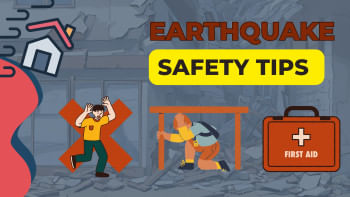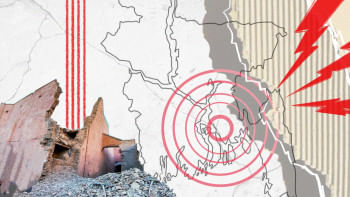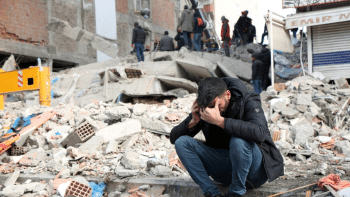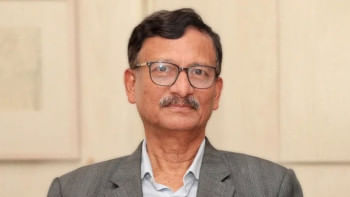Are we taking the risk of earthquakes seriously?

After the country experienced a 5.6 magnitude earthquake on December 2, I saw many joking about the event on social media, despite the real danger the seismic activity posed. Even though no casualties or damages were reported this time, one wonders if the threat of earthquakes are being taken seriously here.
At least 17 earthquakes were recorded in Bangladesh last year. Sylhet, Chattogram and Dhaka are located in the hot zones, and Bangladesh is situated on three fault lines; the location where the Indian, Eurasian, and Burmese tectonic plates converge. There are 13 earthquake-prone areas in Bangladesh, with Chattogram, Chittagong Hill Tracts, and Jaintiapur in Sylhet being at extreme risk. Experts say a powerful earthquake emanating from any of the faults will destroy vast amounts of infrastructure, including buildings, bridges, and supply lines for utilities, and could cause the deaths of hundreds of thousands of people.
As far as Dhaka is concerned, a Rajuk survey found that the city is extremely vulnerable in the face of powerful earthquakes. Nearly 865,000 buildings would be wrecked if an earthquake of 6.9 magnitude hit along the Madhupur fault line, which is fairly near the capital. Around 210,000 people would die and 229,000 would be injured if it happened during the day. The financial loss due to such an event would amount to Tk 2.62 lakh crore, and reconstruction would cost Tk 4.62 lakh crore.
Despite the grim reality, we are not geared up to face earthquakes. More specifically, individuals and families are inadequately prepared to tackle this threat. In areas under Dhaka North City Corporation, majority of the high-rise buildings are at risk, and emergency evacuation facilities are virtually absent.
Faysal, a businessman who lives on the 14th floor of a 20-storey building in Kalyanpur, was extremely scared during the latest earthquake. "The experience was horrific. I had just finished my breakfast and was taking a nap, while my two-year-old was playing right next to me," he said. "The earthquake suddenly shook my whole bed. I picked up my kid right away and ran downstairs along with my wife. On the way, I saw everyone elbowing one another while going down."
Faysal's ordeal points to the need for all family members to plan for an earthquake contingency plan to boost family-level readiness. It's crucial to have a conversation with the kids about earthquake risks, potential effects, and individual and household preparedness. In the event of an emergency, these steps may alleviate stress among family members. A grab-and-go bag—housing an emergency kit, a phone charger and power bank, mini first-aid kit, food, water, and personal amenities—is essential during such events. The emergency kit should include a flashlight with two batteries, a whistle, and bandage, and everyone in the family must know where the bag is located. Besides, each member should be assigned an individual role to avoid confusion.
Finding the best escape routes from the house is crucial as well. Besides, each family member must be informed about where the utilities (electricity, gas) are located, as well as when and how to turn them off. Everyone must be familiar with rapid drills such as "Stop, Drop and Roll" and "Drop, Cover and Hold On," and these should be practised once a month. It is vital for each member to know how to use the fire extinguisher in case of fires caused by earthquakes.
Apart from preparedness, post-earthquake response needs to be strengthened. We need to build capacity for prompt response, rescue and evacuation operations.
The Dhaka Earthquake and Emergency Preparedness Enhancing Resilience (DEEPER) is an urban earthquake resilience-building project that the Bangladesh Red Crescent Society has implemented in 18 administrative areas of Dhaka South City Corporation. This 18-month project focused heavily on the capacity-building of volunteers in response, and strengthened the response capacity of various departments—including the Ward Disaster Management Committee, Fire Service and Civil Defence, and Ministry of Disaster Management and Relief. It also facilitated the emergency preparedness of 36 schools and six hospitals. Due to its success, DEEPER might serve as a model for Dhaka North.
With the engagement of pertinent stakeholders, the national earthquake contingency plan needs to be evaluated. In doing so, all the development partners ought to emphasise preparedness over response and aid. If we don't want to have the same quandary as Turkey, all relevant ministries and departments need to work together both at the institutional and household levels.
Earthquakes only give us a few seconds to think about what to do; with the blink of an eye, a well-maintained garden may turn into hell. This is the time to question ourselves about the years of infrastructural development—about all the bridges and flyovers. Will this development remain unscathed if an earthquake of high magnitude hits Bangladesh? In absence of proper earthquake contingency plans, are we ready to deal with this looming threat?
Monira Sharmin is a columnist and researcher at Brac University. She can be reached at [email protected].
Views expressed in this article are the author's own.
Follow The Daily Star Opinion on Facebook for the latest opinions, commentaries and analyses by experts and professionals. To contribute your article or letter to The Daily Star Opinion, see our guidelines for submission.

 For all latest news, follow The Daily Star's Google News channel.
For all latest news, follow The Daily Star's Google News channel. 







Comments